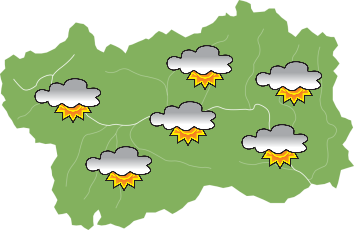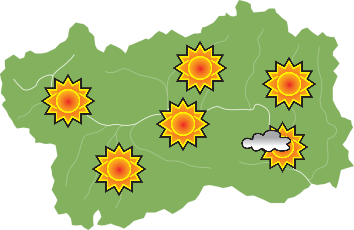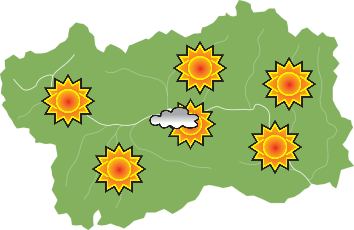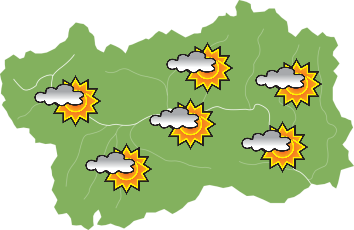Savoy Castle
Resort: Gressoney-Saint-Jean
Accompanied visit. Audio guides in French and English are available during the guided tour (included in the ticket price).
Last tour 30 minutes before closing time.
- October to March:
Tue-Sun from 10 a.m. to 1 p.m. and 2 p.m. to 5 p.m.
- April to September:
Tue-Sun from 9 a.m. to 7 p.m.
open on Mondays in July and August
Closed on Mondays except in July, August and public holidays.
Closed on December 25th and January 1st.
Opening times are subject to variations: we advice to verify them by contacting the phone number reported in the “Contact” area.
Full price ticket: € 10.00
Reduced entrance-fee: € 7,00 (groups of at least 25 paying visitors, specific deals)
Reduced 19 - 25 years: € 3,00
Free:
- children and teenagers under 18 years
- visitors with disabilities and their companions
- teachers and other persons accompanying school groups.
Passes for the visit of several sites are on sell directly at the castle’s ticket office.
From the parking lot you reach the castle through a path in the park.
The path, in winter, can be icy, pay attention.
- on line reservation and purchase of the tickets are strongly advised on MiDA
- backpacks and bulky bags are not allowed
Access: entry allowed for groups up to 25 people per visit.
Tickets: advance sale from opening time onwards, following the arrival order, until last visit.
Accessibility: for the physically disabled it is possible to access the internal courtyard of the castle by car, after calling the ticket office. Access is only possible on the ground floor and first floor. Presence of a lift and toilets for the disabled.
Photos and videos: it is possible to take pictures and videos, for private use and not for gain, with any device without flash and support. Shooting with selfie stick is forbidden. Using shots and films for advertising, press or commercial purposes is allowed only upon authorization.
Pets: small animals are admitted inside the monument only if held in one’s arms or transported in a pet carrier.
Contact
The fairy summer residence of Queen Margherita of Savoy which enjoyed a splendid view of Monte Rosa
Queen Margaret Castle stands at the foot of Ranzola hill, in the place known as “Belvedere”, as it dominates the whole of the valley as far as the Lyskamm glacier.
The building was erected between 1899 (the first stone was laid on 24 August) and 1904. In 1981 it was purchased by Valle d’Aosta Regional Council.
The architect Emilio Stramucci, who designed the neo-Baroque decorations for Palazzo Reale in Turin and for the Quirinale in Rome, designed the mediaeval-style castle, described as “15th-century Lombard style”, quite frequent in France and Savoy, the homelands of the reigning sovereigns. It consists of a central rectangular body, with four cusp-roofed towers, each different from the others. The exteriors is covered in grey stone from the quarries of Chiappey in Gressoney, Gaby and Vert.
The castle is on three floors: the ground floor, with living quarters, the noble floor, with the royal apartments and the second floor (not open to visitors), reserved for gentlemen of the court; the cellars are located underground. Only a few pieces of the original furniture remain; the other furniture on show comes from Villa Margherita, property of the Beck Peccoz Barons, in which the Queen stayed before the manor’s construction; the original pieces include the tapestries in linen and cotton, decorated with a chiné effect. The ornamental pictures are the work of the young painter and restorer Carlo Cussetti, who later worked on the new wing of Palazzo Reale in Turin. The mediaeval-inspired coffered ceilings, wooden panels and furniture are by the Turin wood carver Dellera, who supplied the Royal House.
On the ground floor, the main entrance leads to a vast hall with columns and a painted coffered ceiling, which leads in turn onto other rooms. On one side are the gaming rooms and the sitting rooms, connected to the semi-circular veranda looking over the valley. On the opposite side are the dining room, with its richly painted decorations on the walls, fireplace and ceiling coffers, and parchment-carved boiserie. Neogothic is also the style used in the so-called “staff-bearer’s entrance” in the octagonal tower situated in the north-west corner.
An elegant wooden staircase with griffins and eagles leads to the royal apartments, preceded by a hall whose ceiling bears the inscription “Hic manebimus optime”. The Queen’s apartment occupies the best position: from the windows of the delightful sitting room in the northern tower, you can enjoy the view of Mount Rosa and the entire valley. The false fabrics painted between the windows are reminiscent of the decoration in the baronial hall of Issogne castle. The adjacent apartment was occupied by the Hereditary Prince Humbert. On the opposite side of the hall are situated the apartments of the King and of the Marchioness Pes of Villamarina, lady-in-waiting to the Queen.
The kitchens were located in a building a short distance away and were connected to the castle by an underground Decauville track.
Other annexes include Villa Belvedere, originally used for guests and the royal gendarmerie, and the little house known as Romitaggio Carducci, dedicated to the poet who was a devoted admirer and singer to the queen.
The foot of the manor hosts a rocky garden full of Alpine, botanical species.
How to get here
From Aosta by public transport:
1.Bus 110 – Aosta – Pont-Saint-Martin, running every day, bus stop ‘Pont-Saint-Martin – Stazione FS’. Timetable available on aosta.arriva.it
2.Bus Pont-Saint-Martin – Gressoney, running every day, from the bus stop ‘Pont-St-Martin – FF. SS’ get off at ‘Sporthaus’. Timetable available on vitagroup.it. Continue on foot for about 30 minutes towards the castle
or
1.Trenitalia replacement bus from Aosta to Pont-Saint-Martin. running every day. Timetable available on trenitalia.it
2.Bus Pont-Saint-Martin – Gressoney, running every day, from the bus stop ‘Pont-St-Martin – FF. SS.’ get off at ‘Sporthaus’. Timetable available on vitagroup.it. Continue on foot for about 30 minutes towards the castle.
Bus tickets can be bought at the authorised ticket offices or directly on the bus without any additional fee. Cash or card payments are accepted on the bus.










